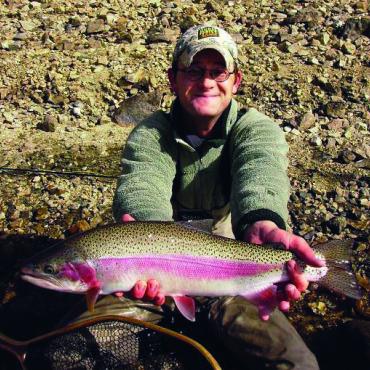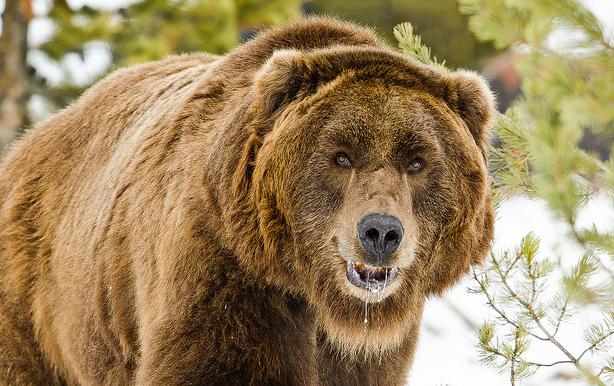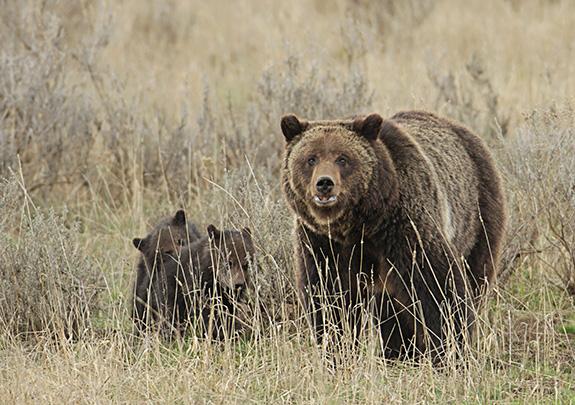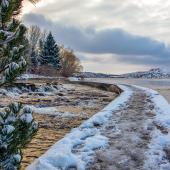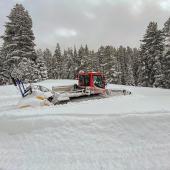Grizzly Bear Avoidance
How to avoid an encounter.
Ursus arctos horribilis, the grizzly bear, is the largest predator in North America. To see a wild grizzly is to view raw freedom and power. Also known as the “brown bear,” the grizzly is highly intelligent, graceful, and extremely powerful. The heaviest of the species can weigh in excess of 1,000 pounds and reach heights of up to seven feet when standing. Numerous tales of derring-do have been spun about and around this fabled creature, and rightfully so; their intelligence, size, and place on the food chain leaves the grizzly bear with only one natural enemy: man.
Most grizzly conflicts happen just prior to, or immediately following, hibernation. Before hibernation, the reasons for conflict are simple. First, the average grizzly puts on over 100 pounds in order to store enough calories to survive the winter and awake in good condition. This weight gain requires an enormous amount of food, the need for which becomes so great that bears will often venture much closer to human habitation in search of all things edible. The second reason for many pre-hibernation conflicts in this area is that the grizzly’s seasonal weight gain coincides with Montana big-game hunting seasons. More people in the woods means more bear encounters—and the smell of a downed elk or deer often serves as an irresistible dinner invitation for a hungry bruin.
Post-hibernation conflicts often stem from a bear’s increased food requirements as well. Bears lose all, if not more than, the weight they put on before hibernation; this puts their entire focus on eating yet again. Plus, a pregnant female bear will give birth during the hibernation period. A new mama bear is especially dangerous as she is not only hell-bent on filling her belly, but she also has two or three more little mouths to worry about. Again the gnaw of hunger drives bears deeper into human-inhabited places, while at the same time the warmer weather brings more people out into bear country.
Without launching into an old timer’s tirade, or some other such story illustrated by an Outdoor Life cover, let it be said that a grizzly bear can and will hurt, maim, and most likely kill the person who surprises it. That being said, if you carry a handgun for bear protection in the backcountry, bear in mind the following: the grizzly is listed as a “threatened” species under the Endangered Species Act. To avoid a hefty fine and possible time in a federal prison, he who shoots a grizzly must prove self-defense—the loss of gallons of blood and a horrific brush with death is normally required.
The best way to survive a bear attack is to avoid one all together. Staying safe in grizzly country is really quite simple and straightforward:
- Avoid areas where bears have been sighted. Call Montana Fish, Wildlife & Parks for a sighting report before heading out.
- Never hike alone in bear country.
- Wear bear bells and chat loudly with your companions. Dogs should also wear a bell and be leashed or otherwise under control.
- Carry and know how to use pepper spray. (Available at Dan Bailey's in Livingston, and other sporting-goods stores in the area.)
- Use extreme caution when near animal carcass, berry patches, or any other likely food source.
- Don’t be a food source yourself. Keep a clean camp: hang food, garbage, and any other odorous items at least 10 feet up and well away from camp.
- Utilize bear-proof containers.
- Store grain and other pack animal food the same as human food.
- Don’t leave fish entrails on river or lake banks or near camp.
If you do encounter or see a bear, try to maintain a safe distance. Do not run. Running triggers the predatory response, and the average grizzly can run 35 mph—much faster than you can. Avoid eye contact and back away very slowly. If the bear charges, remain standing—bears often “bluff charge” and may continue on their way or run past you. If all other options have been exhausted, assume the fetal position, cover your head and neck with your hands and arms, and pull your knees in to protect your midsection. The bear may bat your around a bit and then leave, or it may leave you alone altogether. Either way, do not move until you’re sure the bear is gone. Be sure to report all grizzly sightings to Montana Fish, Wildlife & Parks or other authorities. For more information on grizzly bears and safety in bear country check out fwp.mt.gov, udap.com, or pick up a copy of Mark of the Grizzly by local author Scott McMillion.

